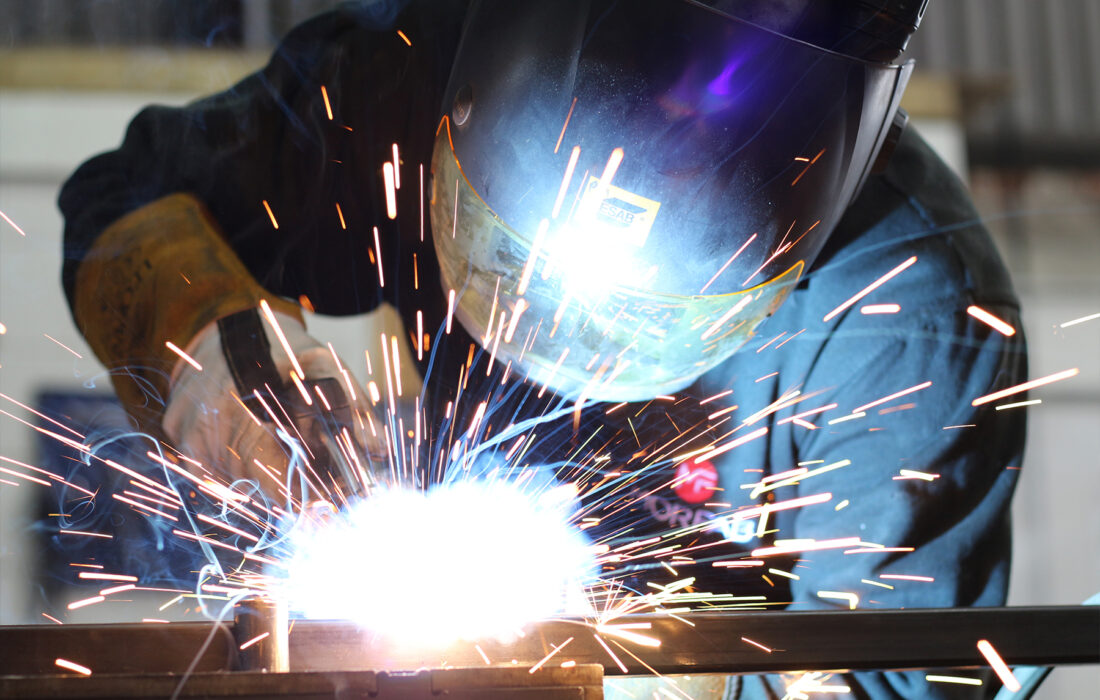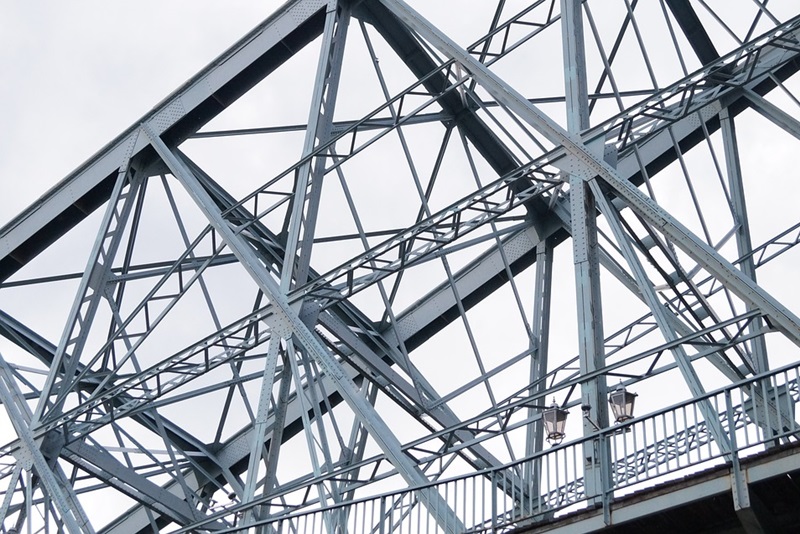Metal Fabrication Melbourne: Accuracy Design for All Demands
Wiki Article
Comprehensive Evaluation of Cutting-Edge Techniques in Steel Fabrication Sector
As the steel construction market remains to advance, the assimilation of cutting-edge techniques has actually become essential for remaining affordable and meeting the demands of contemporary production criteria. From laser cutting advancements to the use of robotics and 3D printing in steel manufacturing, the landscape of manufacture methods is rapidly altering. With each technology bringing its very own set of advantages and challenges, a thorough evaluation of these methods is extremely important for companies intending to simplify their procedures, improve accuracy, and inevitably, boost the quality of their steel construction outcome. In this vibrant sector where modern technology plays a pivotal duty, recognizing the subtleties of these innovative methods is not just an option yet a requirement for those aiming to advance in the ever-evolving world of steel fabrication.Laser Reducing Developments
In the world of steel fabrication, laser reducing innovations have revolutionized the precision and effectiveness of steel shaping processes. By harnessing the power of concentrated laser light beams, producers can currently attain unmatched degrees of accuracy when puncturing numerous types of metals. This technology enables elaborate layouts to be executed with marginal product wastefulness, making it an affordable service for markets needing high precision elements.Among the vital benefits of laser cutting is its capacity to handle a large range of materials, consisting of stainless-steel, aluminum, and carbon steel, effortlessly. The procedure creates clean, burr-free edges, getting rid of the demand for added completing actions. The non-contact nature of laser cutting reduces the risk of material contamination, resulting in greater quality end items.
In addition, laser cutting makers can be configured to make swift, precise cuts, considerably decreasing manufacturing time contrasted to typical reducing methods. This speed and precision make laser cutting particularly ideal for automation settings where performance is extremely important. As innovation remains to advancement, laser cutting is positioned to play an increasingly vital function in the steel manufacture sector.

CNC Machining Innovations
The evolution of CNC machining innovations has actually ushered in a new era of accuracy and effectiveness in the steel fabrication sector. Computer System Numerical Control (CNC) equipments have actually changed steel fabrication by offering unparalleled accuracy and repeatability in the manufacturing procedure. steel fabricators melbourne. One of the vital technologies in CNC machining is the combination of sophisticated software program systems that enable real-time surveillance and changes, leading to enhanced productivity and top quality controlAdditionally, the growth of multi-axis CNC devices has allowed for the manufacture of intricate steel components with intricate styles that were previously testing to create. These machines can perform a large range of machining procedures, including milling, boring, transforming, and grinding, all with high degrees of accuracy.
Moreover, the incorporation of automation and robotics in CNC machining has structured production procedures, lowered preparations, and reduced the margin of error. This assimilation of cutting-edge modern technologies not only increases effectiveness but likewise ensures regular top quality throughout all fabricated steel parts. Finally, CNC machining innovations remain to drive improvements in the steel construction market, establishing new requirements for accuracy and productivity.
Automated Welding Technologies
Automated welding innovations have changed the steel manufacture market, enhancing performance and accuracy in the welding process. These advanced modern technologies use computer-controlled systems to automate the welding procedure, bring about higher performance levels and enhanced weld top quality. Among the essential benefits of automated welding is the ability to do complex welds with consistent accuracy, decreasing the likelihood of errors and remodel.Robotic welding systems go to the forefront of automated welding technologies, offering unrivaled rate and precision. pop over to this site These systems can manage a variety of welding jobs, from straightforward to detailed, effortlessly (steel fixing). By using advanced sensing units and software program, robot welders can adapt to variations in product and joint geometry, making sure an attire and trustworthy weld
Furthermore, automated welding innovations enhance office safety by minimizing the exposure of human welders to hazardous fumes and intense warmth. As the steel construction sector remains to progress, integrating automated welding technologies will certainly be vital for companies looking to remain competitive and meet the expanding needs for top quality bonded items.
Robotics Combination in Manufacture
Utilizing robotic systems in fabrication procedures has become an essential method for boosting efficiency and accuracy in modern production settings. Robotics integration in steel fabrication provides a myriad of benefits, including increased productivity, enhanced quality assurance, and boosted precaution. These advanced robot systems are furnished with advanced sensors and shows capabilities, permitting them to do intricate tasks with a high degree of precision and repeatability.Among the vital advantages of robotics assimilation in steel construction is the ability to automate recurring tasks, such as product handling, cutting, welding, and setting up processes. This not only accelerates manufacturing cycles yet additionally reduces the threat of human error, causing higher overall product quality. Additionally, robotics can operate 24/7, substantially increasing helpful resources production outcome and meeting limited job deadlines.

3D Printing in Steel Production
Having actually transformed the steel manufacture industry via robotics integration, the growing expedition of 3D printing in steel manufacturing is positioned to further advance the world of contemporary production techniques. 3D printing, also referred to as additive production, uses unprecedented style liberty and complexity, enabling the production of elaborate steel frameworks that were previously unattainable with traditional manufacturing techniques. By making use of computer-aided design (CAD) software program, makers can specifically control the layer-by-layer deposition of steel material, resulting in get rid of enhanced functionalities and geometries.Among the essential advantages of 3D printing in steel manufacturing is its ability to decrease material waste dramatically. Unlike subtractive manufacturing processes where excess product is cut away, 3D printing just utilizes the needed amount of steel needed for the final component. This efficiency not only causes cost savings but also aligns with sustainable production techniques by minimizing environmental influence.
Additionally, 3D printing allows quick prototyping and customization, enabling the production of tiny batches of intricate steel components with brief preparations. As the technology proceeds to grow and come to be more easily accessible, its assimilation right into mainstream steel manufacture processes is anticipated to drive technology and efficiency throughout the market.
Verdict
Finally, the steel construction sector has actually seen significant innovations in techniques such as laser cutting, CNC machining, automated welding, robotics integration, and 3D printing. These advanced technologies have reinvented the means steel items are made, leading to increased effectiveness, accuracy, and cost-effectiveness. Continued investment in these cutting-edge techniques is crucial for the industry to remain affordable and meet the needs of contemporary manufacturing procedures.As the steel manufacture market continues to progress, the assimilation of innovative techniques has actually come to be vital for remaining competitive and fulfilling the needs of contemporary production standards.One of the vital advantages of laser cutting is its ability to manage a broad variety of materials, consisting of stainless steel, aluminum, YOURURL.com and carbon steel, with convenience.Automated welding modern technologies have actually transformed the steel fabrication sector, enhancing performance and precision in the welding procedure.Having actually transformed the steel fabrication market through robotics assimilation, the growing expedition of 3D printing in steel manufacturing is positioned to more advancement the world of modern manufacturing methods.In verdict, the steel construction industry has seen considerable innovations in techniques such as laser cutting, CNC machining, automated welding, robotics assimilation, and 3D printing.
Report this wiki page